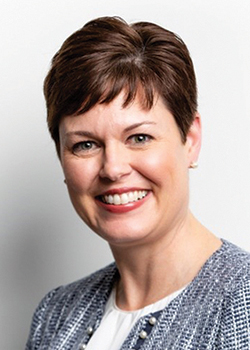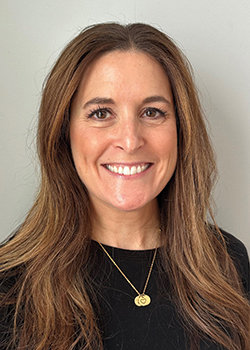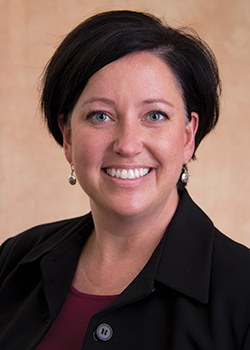DENTAL AND VISION
The products have evolved, covering more
complicated and expensive procedures
By Len Strazewski
Drill and fill those angry cavities. Fit a new pair of eyeglasses. Get free dental and eye exams once a year. A generation ago, dental and vision insurance paid for those benefits and not much more. And agents and brokers sold them as supplements to major medical policies that provided the healthcare that really attracted prospective employees. They were inex-pensive and easy to promote, but not critical for attracting new employees.
In the last few years, dental and vision insurance has evolved, covering more complicated and expensive procedures, and appealing to prospective employees in an increasingly competitive human resources marketplace, insurers say.
Employers are showing very strong interest in dental and vision insurance as part of their array of workplace benefits, says Kara Hoogensen, senior vice president of benefits and protection at Principal Financial Group in Des Moines, Iowa.
Since the end of the COVID-19 pandemic and the resulting upheaval in the employment marketplace, employers have engaged in “a battle for talent. It is important that employers in that market create the right offerings in compensation and employee benefits that help them attract and retain the best talent,” Hoogensen says.
Principal’s strategy is based on their own Business Owners Insights Survey, which polled 1,000 business owners with an employee population of two to 499 employees. The survey indicated that employers are paying for benefits at the highest level since 2008, and about 80% of employers now provide some assistance with health and wellness benefits. Within that group, since 2022, interest in dental insurance has increased 59% and vision care 52%.
Over 70% say they provide benefits to attract and retain employees, termed a significant increase over last year. About two-thirds of respondents said they want to offer additional benefits. Of that group, 9% would like to offer additional health benefits and 5% additional dental insurance.
Dental and vision benefits have also changed from just the basics to more flexible coverage and broader prospects for participation, Hoogensen says. Dental benefits cover a broader level of treatments, beyond drilling and filling, including orthodonture, implants and other more sophisticated treatments. They also provide broader coverage for significant others and the families of employees.

“Agents and brokers need to remind their clients that vision and dental
insurance, as well as most other supplemental benefits,
are not just one and done products. Employees need to
be reminded of their value on a regular basis.”
—Kara Hoogensen
Senior Vice President, Benefits and Protection
Principal Financial Group
Employers and their employees are also becoming more aware of the relationship between general health and vision and dental treatment issues, she says. As a result, they are restructuring vision and dental benefits to cover more medical issues.
Vision benefits, for example, are also becoming more flexible in the ways they cover general health issues in and around the eyes and provide richer and broader reimbursement and co-pays.
“Most employees want benefits that are more meaningful,” Hoogensen explains, “and providers have recognized the medical value as well as the recruitment and retention values.”
Dental and vision benefits do more than deal with teeth and eye problems, she says, and the medical community has identified their value in general health. For example, eye examinations can help physicians diagnose early onset of high blood pressure (hyper-tension) and diabetes, among other diseases, she notes.

“People still value not going to the emergency room. People are prioritizing home
healthcare solutions (such as telehealth) and are
seeking out solutions such as tele dentistry
and digital eyecare.”
—Jill Purcell
Head, Dental and Vision Products
Guardian Life Insurance Company
Jill Purcell, head of dental and vision products at Guardian Life Insurance Co. in New York, pins many of the changes on the COVID pandemic. “Great changes have come out of the pandemic, and employees have learned to value their benefits more than ever,” she says, even though during the pandemic incidental medical claims dropped as employees avoided seeking out healthcare and exposing themselves to the virus.
Those claims are on their way back. “Dental claims have rebounded. Vision claims have rebounded,” she says. But employees have gotten used to working from home and seeking out remote means of dealing with their health claims.
“People still value not going to the emergency room. People are prioritizing home healthcare solutions (such as telehealth) and are seeking out solutions such as tele dentistry and digital eyecare,” and as a result they are seeking out a digital healthcare experience and insurance that will pay for those resources, Purcell says.
Employees are also seeking dental insurance that provides more oral examinations and prevention benefits and vision insurance that covers examination and treatment for eyestrain and problems from working in a digital environment. They are also seeking more payment for children and dependents.
“All vision plans now cover preventative care and greater eyewear purchasing options. People want to go online to purchase eyecare and eyewear,” Purcell says.
Today, almost all employers contribute something to vision and dental insurance premiums to encourage employees to purchase the coverage, Purcell notes.

“Vision and dental insurance haven’t changed much overall. There is
still a basic plan design that is a lot like the plans of
previous years, but there have been a lot of
enhancements in the post-pandemic era.”
—Jennifer Wooster
Vice President, Group Actuarial
Ameritas
Jennifer Wooster, vice president of group actuarial at Ameritas in Lincoln, Nebraska, agrees that supplemental benefits such as vision and dental are not just minor contributors to an employee compensation package. They are now considered part of overall employee wellness programs that support employee health needs. They cover more conditions and pay more costs.
“Vision and dental insurance haven’t changed much overall. There is still a basic plan design that is a lot like the plans of previous years,” she says. “But there have been a lot of enhancements in the post-pandemic era. Employees can purchase higher maximums, higher or lower deductibles, and other features that make the product more flexible.”
The enhancements are designed to meet changes in employee needs, she says, which have been changing with pandemic-generated changes in work style. New benefit designs respond to the health issues of remote workers and have created new ways of delivering benefits, such as telehealth and tele dentistry, that support online structures that have been generated by pandemic protection efforts. The work design changes are likely to be permanent and employers are trying to modify benefit plans to meet the needs of the evolved workers, she says.
“Employers are trying to enhance product flexibility to provide more opportunities for employees and expand their overall benefits offerings. Every-one is trying to make their benefits plan unique,” Wooster says.
Costs are also an important issue. Employers continue to look for ways to contain benefits costs, but they recognize that helping employees reduce healthcare claims costs with supplemental benefits such as vision and dental insurance can contribute to the benefits economy overall. Encouraging participation in supplemental benefits not only takes more burden off employees but contributes to lower levels of absenteeism when some workers return to worksites and greater employee productivity if they continue to work at home.
The new generation of vision and dental benefits poses marketing challenges for agents and brokers, but insurers say they are providing more education-al resources to help agents and brokers communicate the new features. Even though many supplemental benefits such as vision and dental insurance are sold separately from major medical insurance and marketed by separate groups of specialty insurers, agents and brokers are combining the benefits into their enrollment platforms and encouraging employers to promote the coverage to employees as part of a unified enrollment process.
Hoogensen says agents and brokers need to advise employers to integrate their benefits programs and their enrollment processes. Most employers now contribute some or all the premium for vision and dental benefits, recognizing the program value in recruitment and retention, and employees should make their participation decisions right after medical plans and in the same employee benefits management system.
While insurers have marketing communications that can help describe and explain the new features, agents and brokers need to listen to employers and understand their needs, she notes. “Agents and brokers need to listen to their clients and understand their new needs as employees return to their offices in the post-pandemic environment.
“And employers need to listen more to their employees and their needs in this new environment,” Hoogensen adds. “Agents and brokers need to remind their clients that vision and dental insurance, as well as most other supple-mental benefits, are not just one and done products. Employees need to be reminded of their value on a regular basis.”
For more information:
Ameritas
www.ameritas.com
Guardian Life Insurance Company
www.guardianlife.com
Principal Financial Group
www.principal.com
The author
Len Strazewski is a Chicago-based writer, editor and educator specializing in marketing, management and technology topics. In addition to contributing to Rough Notes, he has written on insurance for Business Insurance, Risk & Insurance, the Chicago Tribune and Human Resource Executive, among other publications.




